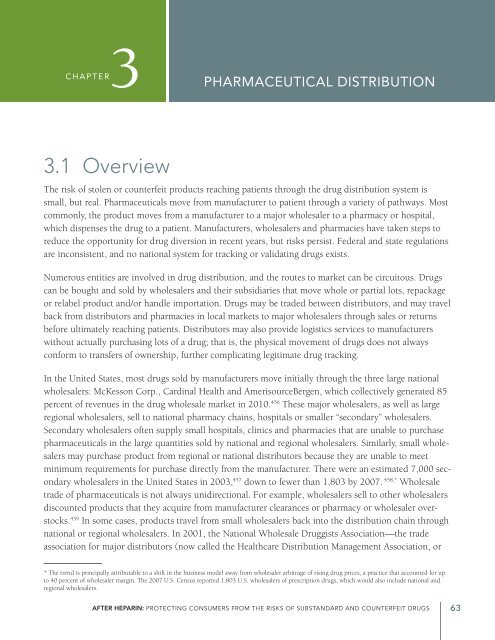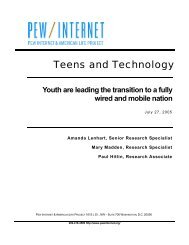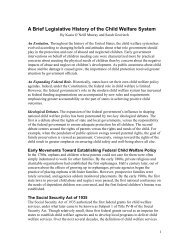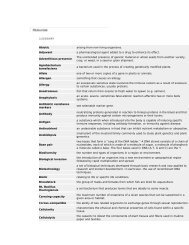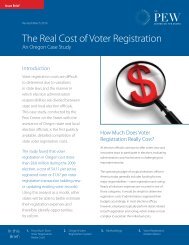After Heparin: - The Pew Charitable Trusts
After Heparin: - The Pew Charitable Trusts
After Heparin: - The Pew Charitable Trusts
You also want an ePaper? Increase the reach of your titles
YUMPU automatically turns print PDFs into web optimized ePapers that Google loves.
CHAPTER3<br />
PHARMACEUTICAL DISTRIBUTION<br />
3.1 Overview<br />
<strong>The</strong> risk of stolen or counterfeit products reaching patients through the drug distribution system is<br />
small, but real. Pharmaceuticals move from manufacturer to patient through a variety of pathways. Most<br />
commonly, the product moves from a manufacturer to a major wholesaler to a pharmacy or hospital,<br />
which dispenses the drug to a patient. Manufacturers, wholesalers and pharmacies have taken steps to<br />
reduce the opportunity for drug diversion in recent years, but risks persist. Federal and state regulations<br />
are inconsistent, and no national system for tracking or validating drugs exists.<br />
Numerous entities are involved in drug distribution, and the routes to market can be circuitous. Drugs<br />
can be bought and sold by wholesalers and their subsidiaries that move whole or partial lots, repackage<br />
or relabel product and/or handle importation. Drugs may be traded between distributors, and may travel<br />
back from distributors and pharmacies in local markets to major wholesalers through sales or returns<br />
before ultimately reaching patients. Distributors may also provide logistics services to manufacturers<br />
without actually purchasing lots of a drug; that is, the physical movement of drugs does not always<br />
conform to transfers of ownership, further complicating legitimate drug tracking.<br />
In the United States, most drugs sold by manufacturers move initially through the three large national<br />
wholesalers: McKesson Corp., Cardinal Health and AmerisourceBergen, which collectively generated 85<br />
percent of revenues in the drug wholesale market in 2010. 456 <strong>The</strong>se major wholesalers, as well as large<br />
regional wholesalers, sell to national pharmacy chains, hospitals or smaller “secondary” wholesalers.<br />
Secondary wholesalers often supply small hospitals, clinics and pharmacies that are unable to purchase<br />
pharmaceuticals in the large quantities sold by national and regional wholesalers. Similarly, small wholesalers<br />
may purchase product from regional or national distributors because they are unable to meet<br />
minimum requirements for purchase directly from the manufacturer. <strong>The</strong>re were an estimated 7,000 secondary<br />
wholesalers in the United States in 2003, 457 down to fewer than 1,803 by 2007. 458,* Wholesale<br />
trade of pharmaceuticals is not always unidirectional. For example, wholesalers sell to other wholesalers<br />
discounted products that they acquire from manufacturer clearances or pharmacy or wholesaler overstocks.<br />
459 In some cases, products travel from small wholesalers back into the distribution chain through<br />
national or regional wholesalers. In 2001, the National Wholesale Druggists Association—the trade<br />
association for major distributors (now called the Healthcare Distribution Management Association, or<br />
* <strong>The</strong> trend is principally attributable to a shift in the business model away from wholesaler arbitrage of rising drug prices, a practice that accounted for up<br />
to 40 percent of wholesaler margin. <strong>The</strong> 2007 U.S. Census reported 1,803 U.S. wholesalers of prescription drugs, which would also include national and<br />
regional wholesalers.<br />
<strong>After</strong> <strong>Heparin</strong>: PRotecting Consumers from the Risks of Substandard and Counterfeit Drugs 63


